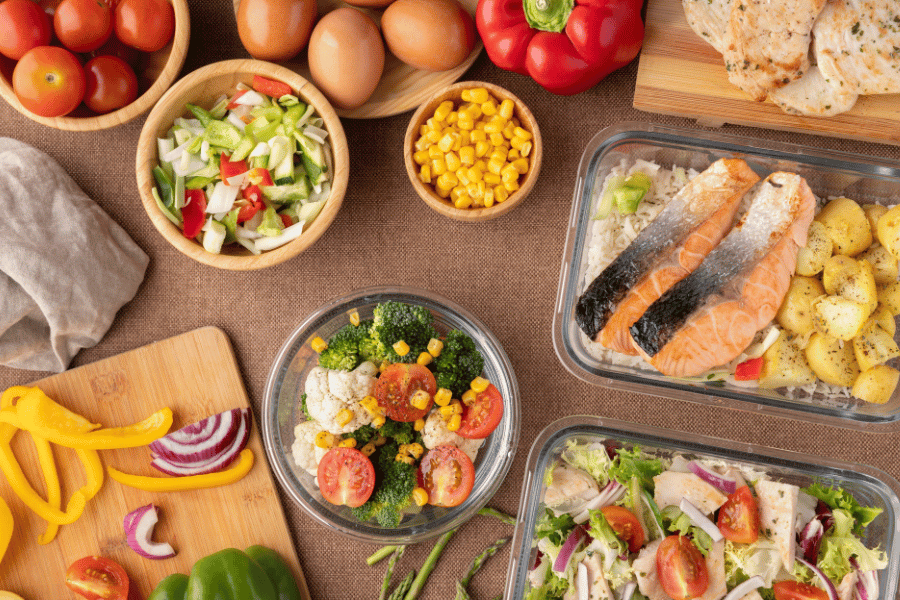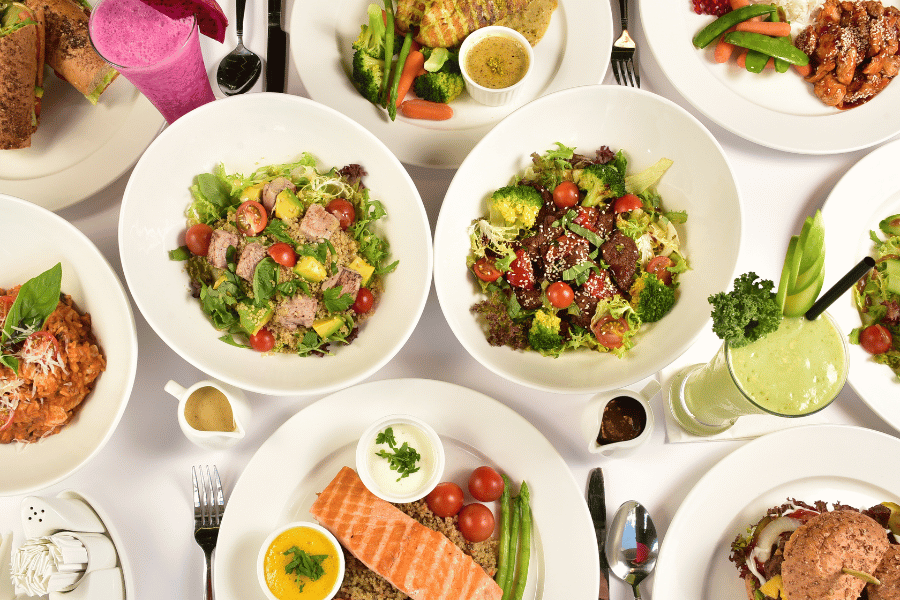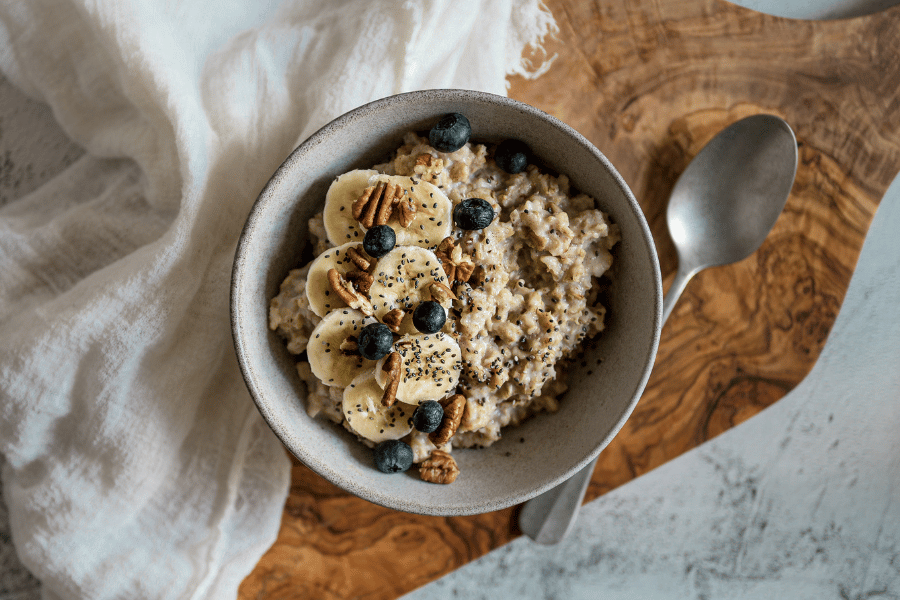Diet Plan to Lose Weight Fast?Exploring the concept of fast yet sustainable weight loss is essential in today’s fast-paced world where quick results are often sought after. However, the key lies in balancing the desire for rapid weight loss with long-term health and sustainability. Rapid weight loss strategies can be effective, but they often lead to a yo-yo effect, where the weight returns as quickly as it was lost.
The importance of balancing speed with health and longevity in a diet plan cannot be overstated. A sustainable approach to weight loss not only focuses on shedding pounds quickly but also on making lifestyle changes that can be maintained in the long run. This includes understanding the basics of weight loss, like the science of calorie deficit and metabolism, and integrating these concepts into a diet plan that is tailored to individual needs, rich in diversity, and flexible enough to adapt over time.
In this introduction, we have established the theme of the article, highlighting the importance of a balanced and sustainable approach to rapid weight loss. The content lays the groundwork for the detailed exploration of effective diet planning in the following sections.

Understanding the Basics of Weight Loss
To embark on a journey of rapid yet sustainable weight loss, it’s essential to grasp the fundamental concepts that govern this process.
How weight loss works: the science of calorie deficit: The cornerstone of any weight loss regime is creating a calorie deficit, where the number of calories burned exceeds the calories consumed. This principle is rooted in basic metabolic science; our bodies need energy to function, and when food intake is reduced, stored fat is converted to energy, leading to weight loss. Understanding and implementing a calorie deficit, while maintaining nutritional balance, is crucial for a successful diet plan.
The role of metabolism in weight loss: Metabolism plays a pivotal role in how efficiently the body burns calories. It’s a complex biochemical process where calories from food and drinks are combined with oxygen to release the energy your body needs to function. Factors like age, sex, body composition, and physical activity influence metabolic rate. A higher metabolic rate means more calories are burned at rest and during activity, aiding weight loss. Incorporating methods to boost metabolism, such as exercise and protein-rich foods, can enhance the effectiveness of a diet plan.
This section lays the foundation for understanding the basic mechanics of weight loss. Recognizing these principles is the first step in crafting a diet plan that not only promotes rapid weight loss but also aligns with long-term health and sustainability.

Key Components of a Sustainable Diet Plan
Creating a diet plan for fast weight loss that’s also sustainable involves understanding and balancing essential nutritional components. Let’s look at what makes a diet both effective for weight loss and good for long-term health:
- Macronutrients: Finding the Right Balance for Your Body: Macronutrients, including proteins, carbohydrates, and fats, are the building blocks of any diet. A sustainable weight loss plan requires finding the right balance of these macronutrients tailored to individual needs. Proteins are vital for muscle repair and growth, carbohydrates provide energy, and fats are crucial for hormone production and nutrient absorption. The right balance will differ for each person, depending on factors like activity level, metabolic rate, and personal health goals.
- Importance of Micronutrients and Dietary Diversity: While macronutrients get most of the attention in diet plans, micronutrients — vitamins and minerals — are just as important. They play critical roles in maintaining bodily functions, from bone health to immune response. A varied diet rich in fruits, vegetables, lean proteins, whole grains, and healthy fats ensures a good intake of these essential nutrients. Dietary diversity not only supports physical health but also makes a diet more enjoyable and sustainable in the long term.
A sustainable diet plan isn’t just about restricting calories; it’s about consuming the right balance of nutrients to support overall health while losing weight. This approach not only helps in achieving weight loss goals but also promotes a healthier, more balanced lifestyle.
Customizing Your Diet Plan for Rapid Results
Tailoring a diet plan to individual needs is key to achieving rapid weight loss without sacrificing nutrition. Here’s how to customize your approach:
- How to Tailor a Diet Plan to Individual Needs: Every individual’s body is unique, and factors like age, gender, activity level, and metabolic rate play a significant role in determining the most effective diet plan. Start by assessing your daily calorie needs and then create a plan that provides a slight calorie deficit while still supplying essential nutrients. It’s not about one-size-fits-all; it’s about creating a plan that works for your body and your lifestyle.
- Strategies for Rapid Weight Loss Without Sacrificing Nutrition: To lose weight quickly yet healthily, focus on nutrient-dense foods that provide more nutrition per calorie. This means plenty of vegetables, lean proteins, whole grains, and healthy fats. Avoid empty calories found in sugary snacks and processed foods. Additionally, incorporating meal timing strategies like intermittent fasting can boost weight loss. It’s also important to stay hydrated and get adequate sleep, as both can affect your metabolism and hunger levels.
| Diet Plan | Description | Pros | Cons |
|---|---|---|---|
| 1. Mediterranean Diet | A diet rich in fruits, vegetables, whole grains, lean protein (fish, poultry), and healthy fats (olive oil). | – Supports heart health | – Weight loss may be slower |
| – Sustainable and enjoyable | – May require lifestyle changes | ||
| – Balanced and nutrient-dense | – Results vary from person to person | ||
| – Promotes longevity | |||
| 2. Ketogenic Diet | A low-carb, high-fat diet that forces the body into a state of ketosis, where it burns fat for energy. | – Rapid initial weight loss | – Difficult to sustain long-term |
| – Reduces appetite | – Potential side effects (keto flu) | ||
| – May improve blood sugar control | – Restrictive and eliminates some foods | ||
| – May increase mental clarity | – Not suitable for everyone | ||
| 3. Paleo Diet | Emphasizes whole foods like lean meats, fish, fruits, vegetables, nuts, and seeds, while avoiding grains, dairy, and processed foods. | – Encourages whole, unprocessed foods | – Eliminates major food groups |
| – Can lead to weight loss | – Challenging to follow socially | ||
| – May improve blood sugar levels | – Limited scientific evidence | ||
| – Reduces processed food intake | |||
| 4. Intermittent Fasting | Cycling between periods of eating and fasting, with various methods like 16/8 (16 hours fasting, 8 hours eating) or 5:2 (5 days regular eating, 2 days of very low calorie intake). | – Can help control calorie intake | – May be difficult to adapt to |
| – May improve insulin sensitivity | – Not suitable for everyone | ||
| – Promotes autophagy (cellular repair) | – Potential for overeating during eating windows | ||
| – Flexible and adaptable | |||
| 5. Plant-Based Diet | Focusing on plant-based foods like fruits, vegetables, legumes, whole grains, nuts, and seeds, while avoiding or minimizing animal products. | – High in fiber and nutrients | – Requires careful planning to meet nutrient needs |
| – Supports weight loss | – May require supplementation of certain nutrients | ||
| – May reduce the risk of chronic diseases | – Social and cultural challenges | ||
| – Environmentally friendly |
Creating a customized diet plan involves careful consideration of your personal health and lifestyle. It’s not just about cutting calories; it’s about making smarter food choices, understanding your body’s needs, and adjusting your eating habits for optimal nutrition and weight loss.
Meal Planning and Preparation for Success
Diet Plan to Lose Weight Fast?Effective meal planning and preparation are crucial for sticking to a diet plan and achieving rapid weight loss. Here are some practical tips:
- Practical Tips for Meal Planning: Start by creating a weekly menu. This should include a variety of nutrient-rich foods to meet your dietary needs while keeping your meals interesting. Plan your meals around your schedule, ensuring you have simple, healthy options on busy days. Include snacks to prevent overeating at meal times. Use tools like apps or a meal planning journal to organize your plans and grocery lists.
- Time-Saving and Healthy Cooking Techniques: Preparing meals in advance can save time and reduce the temptation to opt for unhealthy convenience foods. Batch cooking and freezing meals for later use can be a huge time-saver. Focus on cooking methods that preserve nutrients and flavor, such as steaming, grilling, or baking, rather than frying. Experiment with herbs and spices for flavor without extra calories. Remember, the goal is to create meals that are enjoyable and satisfying, which is key to maintaining a diet plan long term.
Meal planning and preparation do not have to be daunting tasks. With a little organization and creativity, they can become enjoyable parts of your weight loss journey, contributing significantly to your success.

Overcoming Common Dieting Challenges
Dieting can present various challenges, but understanding and preparing for these can help you stay on track. Let’s address some common obstacles and solutions:
- Addressing Cravings and Managing Hunger: Cravings and hunger pangs are common challenges when following a diet plan. To manage these, it’s important to ensure your diet includes enough protein and fiber, which help you feel fuller for longer. Also, don’t completely deprive yourself of the foods you love; instead, find healthier alternatives or allow for occasional small treats. Drinking water before meals can also help reduce hunger.
- Staying on Track During Social Events and Dining Out: Social events and dining out can often lead to overeating or choosing less healthy options. One strategy is to eat a healthy snack before attending an event to avoid overindulgence. When dining out, look for healthier menu options, such as grilled rather than fried foods, and ask for dressings or sauces on the side. Don’t hesitate to communicate your dietary preferences when ordering.
Overcoming these challenges requires a mix of practical strategies and mindset shifts. Remember that occasional slip-ups are normal; the key is to get back on track without guilt or self-criticism. Consistency and persistence are more important than perfection.
Monitoring Progress and Adjusting Your Diet Plan
Tracking your progress and making adjustments as needed is vital for the success of any weight loss diet plan. Here’s how to effectively monitor and tweak your diet:
- How to Track Your Progress Effectively: Monitoring your progress goes beyond just stepping on the scale. Consider keeping a food diary to record what you eat and how it affects your body and mood. Measuring body measurements, such as waist circumference, can also provide insights into your progress. Additionally, pay attention to non-scale victories, like improved energy levels, better sleep, or clothes fitting more comfortably.
- Adjusting the Diet Plan Based on Results and Feedback: Your body will change as you lose weight, and so should your diet plan. If you hit a plateau or notice changes in your energy levels, it might be time to reassess your calorie intake and macronutrient balance. Don’t be afraid to experiment with different healthy foods or meal timings to see what works best for you. Consulting with a nutritionist or dietician can provide professional insights for adjustments.
A diet plan is not static; it’s a dynamic guide that should evolve with your changing body and needs. Regular monitoring and willingness to adjust are key to achieving and maintaining your weight loss goals.
FAQ Section: Crafting Your Fast Weight Loss Diet Plan
This FAQ section aims to answer common questions and provide clarity on creating an effective diet plan for fast weight loss.
How Quickly Can You Safely Lose Weight with a Diet Plan? Safely losing weight involves shedding 1-2 pounds per week. This rate ensures that weight loss is primarily from fat and minimizes the loss of muscle mass. Rapid weight loss beyond this recommendation can lead to health issues, including nutrient deficiencies and a decrease in metabolic rate.
What Are the Best Foods to Include in a Fast Weight Loss Diet? The best foods for a fast weight loss diet are those that are nutrient-dense and low in calories. These include lean proteins (like chicken, fish, and plant-based proteins), a variety of vegetables, fruits (in moderation), whole grains, and healthy fats (such as avocados and nuts). These foods help in creating a calorie deficit while providing essential nutrients.
How Can You Manage Hunger on a Low-Calorie Diet? To manage hunger on a low-calorie diet, prioritize foods high in fiber and protein, as they tend to be more filling. Drinking plenty of water, eating slowly, and including a variety of foods in your diet can also help in managing hunger. Additionally, allowing for small, healthy snacks between meals can prevent excessive hunger.
Can You Lose Weight Fast Without Exercise? While it’s possible to lose weight through diet alone, combining it with exercise can accelerate weight loss and provide numerous health benefits. Exercise can help burn additional calories, build muscle mass, and improve overall health.
How to Adapt Your Diet Plan as You Lose Weight? As you lose weight, your body’s energy needs decrease. Therefore, you may need to adjust your calorie intake or macronutrient distribution. It’s important to listen to your body and adjust your diet plan as needed, potentially with the guidance of a nutrition or health professional.

